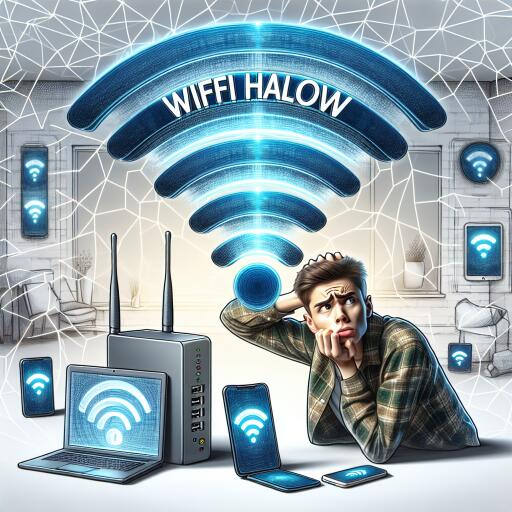Exploring Wi-Fi HaLow: The Future of IoT Connectivity
In the realm of wireless technology, a new player, Wi-Fi HaLow, quietly makes waves, especially in the Internet of Things (IoT) domain. Different from its predecessors and designed to cater to the unique demands of IoT devices, Wi-Fi HaLow promises extended range and lower power consumption without sacrificing the reliability we’ve come to expect from Wi-Fi. Let’s dive deep into what Wi-Fi HaLow is and its potential impact on our interconnected world.
Understanding Wi-Fi HaLow
Wi-Fi HaLow, based on the IEEE 802.11ah protocol, diverges from traditional Wi-Fi by operating on sub-1GHz frequencies. This aspect allows it to offer a far-reaching signal range, making it a perfect match for IoT applications, smart city infrastructures, and even mesh networking systems. Unlike the Wi-Fi standards that work on 2.4GHz, 5GHz, and even 6GHz frequencies, Wi-Fi HaLow’s choice of lower frequency bands allows it to cover distances up to a kilometer and more, though at the cost of slower data transfer rates. Nonetheless, it balances this by providing connectivity to a myriad of devices over vast distances with minimal power consumption.
How Wi-Fi HaLow Stands Apart
While Wi-Fi’s evolution focuses on speed enhancements and reducing latency, Wi-Fi HaLow targets an area where traditional protocols have lagged: signal range and power efficiency. It shines in penetrating barriers, a characteristic brought by its lower frequency usage, making it superior in range and wall penetration compared to higher frequency bands.
Perhaps its most notable feature is the ability to connect with over 8,000 devices simultaneously. This capacity far outstrips the connectivity limits of traditional Wi-Fi, aligning with the growing needs of IoT environments where countless devices require reliable connections to function cohesively.
Wi-Fi HaLow vs. Other IoT Protocols
While Wi-Fi HaLow presents a compelling case, it’s not the sole solution for IoT connectivity. Alternatives like Z-Wave, Zigbee, and Thread have their own set of strengths and limitations. Z-Wave and Zigbee, for instance, offer comparable long-range and low-power benefits but fall short in areas where Wi-Fi HaLow excels, such as device connectivity capacity and the need for additional controllers or hubs.
Thread, though a newer entrant, provides IP-based direct connections among devices without a hub. However, it still requires a border router to connect to the internet and supports a relatively smaller network of devices compared to Wi-Fi HaLow.
The Advantages of Wi-Fi HaLow for Users
For consumers and professionals alike, Wi-Fi HaLow ushers in numerous advantages, particularly in smart home applications and vast, interconnected systems. Its use of a distinct frequency band reduces the chance of congestion, and its superior range enables single access points to cover extensive areas. This capability could simplify networking across large properties without the need for additional hardware like extenders or multiple routers.
Adopting Wi-Fi HaLow
Integration of Wi-Fi HaLow requires hardware that supports the standard, meaning existing devices and routers won’t be able to leverage HaLow capabilities through firmware updates alone. The slow adoption pace might see a change with the increase in IoT devices necessitating efficient, wide-range connectivity solutions. Some manufacturers have begun incorporating Wi-Fi HaLow into their products, signaling the start of broader availability and usage.
Conclusion
As an innovative solution for IoT connectivity, Wi-Fi HaLow stands out by offering an extended range, impressive device capacity, and reduced power consumption. Though the transition to HaLow-compatible devices may take time, its benefits for a seamlessly connected and efficient IoT ecosystem are undeniable. Wi-Fi HaLow is setting the stage for a future where our devices communicate more reliably over greater distances, making our smart environments even smarter.








